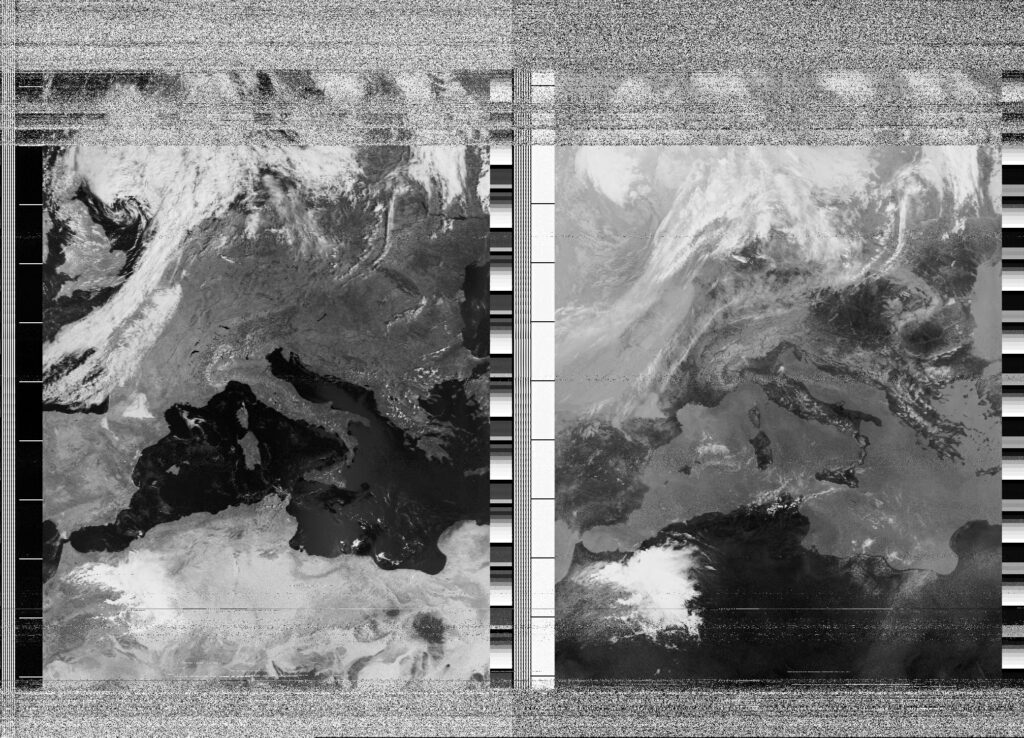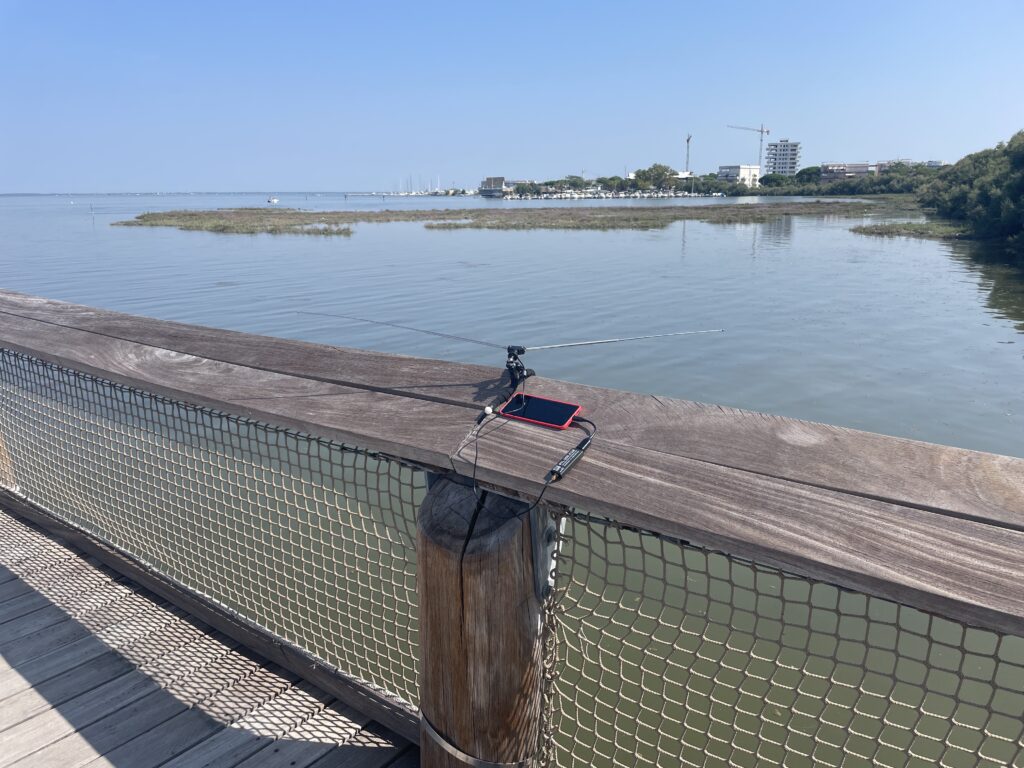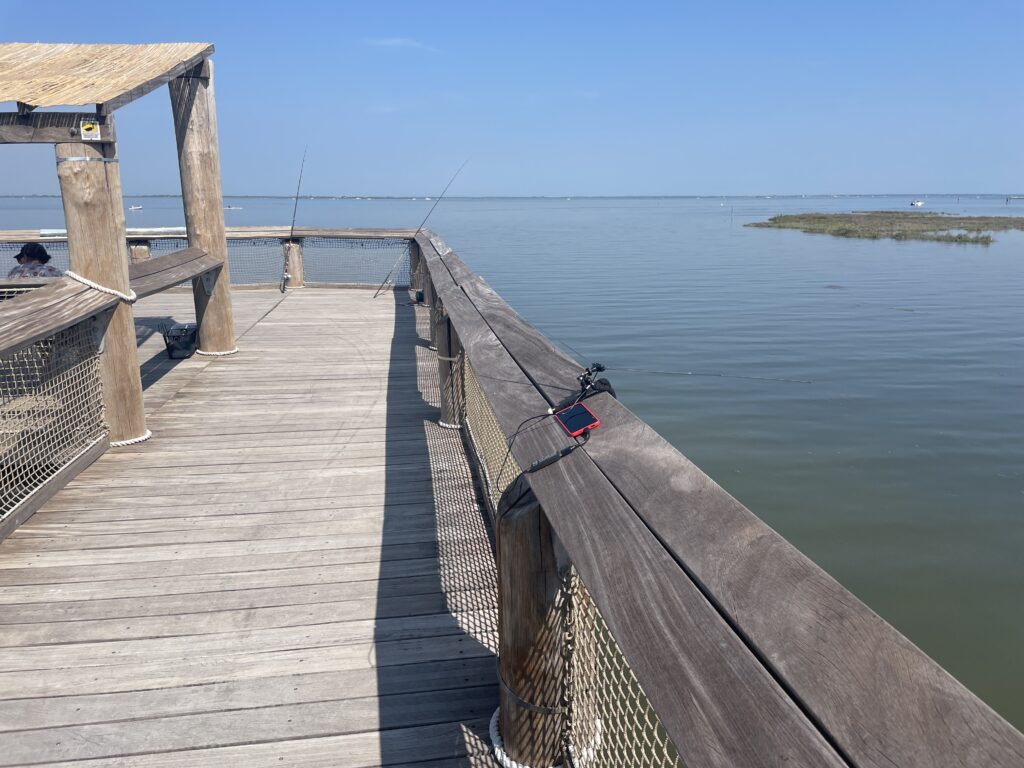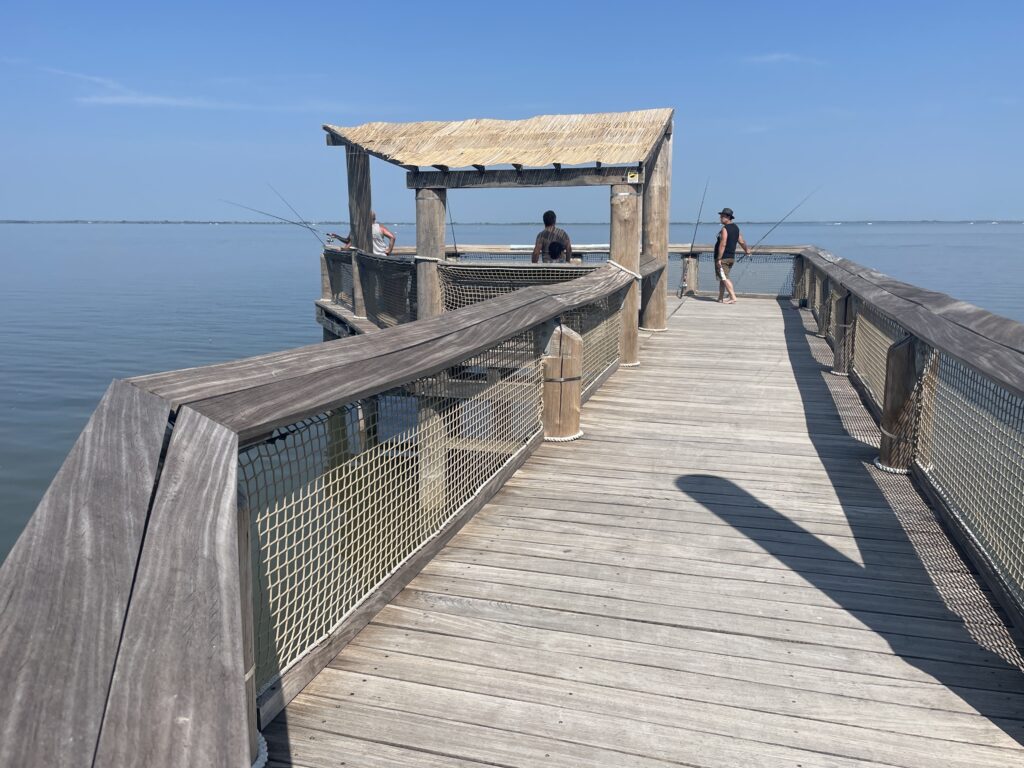Local Date
23 August 2024Local Time
11:04Location
Belvedere Trabucco in Lignano SabbiadoroCountry or Territory
ItalyContributor
Sasha EngelmannSatellite
NOAA-19Radio Callsign
Archive ID
Coordinates
When I arrived at the Belvedere Trabucco - a wooden pier facing the lagoon north of Ligano Sabbiadoro - I discovered it was full of fishing poles. Some older men and a few teenagers were monitoring the poles and their long, taught fishing lines. One young person re-attached the lure on their line - it looked like a spider or dragonfly. Fixing my radio antenna to the edge of the wooden railing, I fished for signals. The sound of NOAA-19 emerged soon after, and gained in strength quickly, as there was almost nothing between me and the Northern horizon except the lagoon and a thin line of land in the distance. In the greenish water below I could see the characteristic clumps of material called 'mucilagine' in Italy. Though mucilagine has been known for hundreds of years and is caused by a non-toxic microalgae, Gonyaulax, it has increased in quantity with rising Adriatic sea temperatures and it poses a growing problem to small fishing boats and businesses. Apparently, some hotels along the Italian coastline are even sending 'mucilagine weather reports' to tourists and travellers who want updated, semi real-time information on the spread of mucilagine in seawater before arriving at the beach.




